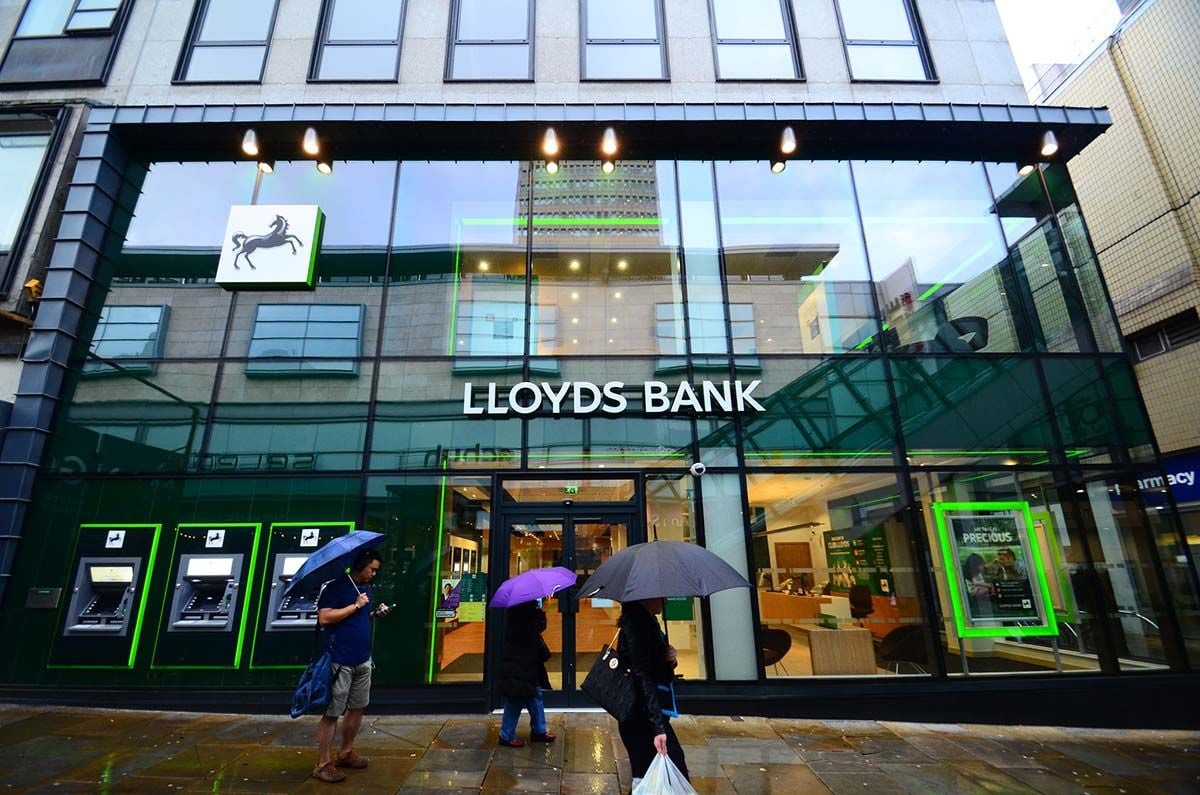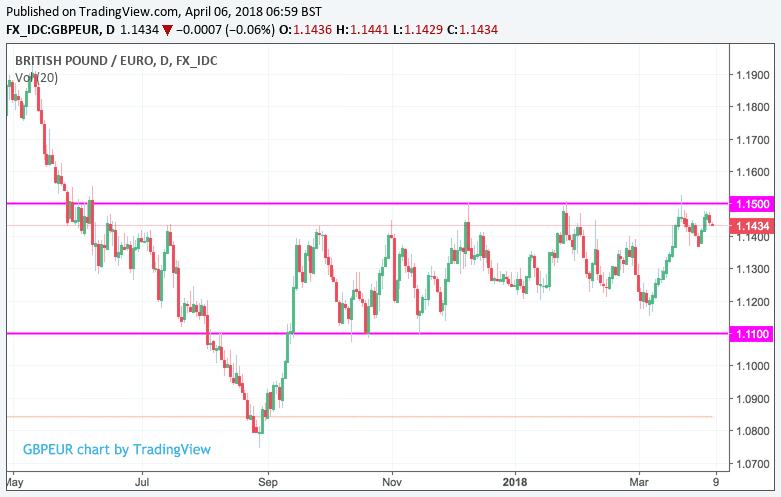Lloyds: Pound-to-Euro Rate "Stuck in the Middle"
- Written by: James Skinner
- 1 GBP buys 1.1432 EUR at time of writing
- Traders "have relatively low conviction on the medium-term outlook" for GBP/EUR
- Sterling in retreat from the top end of its six month range against Euro

© Money Bright, Flickr, Reproduced under CC Licensing
Pound Sterling is seen remaining trapped in the middles of its recent range against the Euro over coming months before slipping lower toward the end of the year, according to strategists at Lloyds Bank.
The call by the UK high-street lender comes as Sterling was seen approaching a test of the key resistance zone against the Euro that lies in the 1.1450-1.15 area and we wrote mid-week that this represented a make-or-break moment for the currency saying a breach of the resistance could allow for a rapid run higher to 1.16.
We also warned that failure to break higher could however condemn Sterling back to its longer-term range and it appears that the heavy sell orders found at this resistance point combined with a disappointing services PMI data release to trigger yet another failure.
The British currency has been trading between the 1.11 and 1.15 level against its European rival ever since late September 2017, which a tight 4% range that is less than half of what has prevailed on a rolling six month basis over the last 20 years.
“The only sensible conclusion to draw is that the pair is being pulled in opposing directions in an environment in which participants have relatively low conviction on the medium-term outlook,” says Gajan Mahadevan, a quantitative strategist at Lloyds Bank. “Given the risks over our forecast horizon, which includes a shift to tighter monetary conditions from the Bank of England and European Central Bank, and the conclusion of Brexit negotiations, we see little reason for the range to break at this stage.”
Consensus economist predictions for the Pound-to-Euro exchange rate for year-end 2018 vary wildly with the average of all estimates suggests Sterling will trade around 1.12 at the end of December, but the range between the highest and lowest forecasts is stark.
The most bearish of pundits is looking for a Pound-to-Euro rate of just 1.03 by year end while the most bullish has nailed their proverbial colours to the 1.25 threshold. This is a range of more than 21% between the highest and lowest forecasts.
“This is consistent with the message being relayed by the option market, which has GBP/EUR volatility subdued and implied directional sentiment close to neutral. The combination of these two dynamics has reinforced the psychological bias for the pair to remain range bound,” says Mahadevan.
For now Pound Sterling is in retreat from the top end of its six month range and assuming Mahadevan and the Lloyds team are right, it could well continue to oscillate within the range over coming weeks.
The two greatest push and pull factors that have trapped the exchange rate within its dull confines, and that will matter most in the months ahead, are the relative monetary policies of the UK and Eurozone and uncertainty over the likely outcome of the Brexit negotiations.
The Bank of England has grown more intolerant of above-target inflation and fearful of the boost that rising wages might deliver to the consumer price index of late. It already raised the Bank Rate once, to 0.5%, back in November 2017 but warned in February that it will move again, faster and further than the market gives it credit for, if the inflation picture evolves in line with its latest set of forecasts.
Markets are now looking to the May meeting for the BoE’s next move and an updated view on the economy. Meanwhile, the European Central Bank is expected to push ahead with the winding down of its quantitative easing program around September so that it is likely to cease all of its intervention in the European bond market before year-end.
“Both the BoE and ECB are likely to continue to normalise monetary conditions, but the net impact on GBP/EUR may be limited. At this stage, we are biased for the range to remain intact over our forecast horizon,” says Mahadevan.
With both central banks offsetting the actions of the other as far as exchange rates are concerned, the most decisive factor for traders will likely be the outcome of Brexit negotiations, which will become known closer toward the end of the year. It is possible that the indecision displayed by currency markets over the last six months is merely a reflection of this uncertainty about the final outcome.
“It is clear that in spite of GBP/EUR trading a narrow range, the outlook is anything but certain. This is well evidenced in economists’ expectations, option market sentiment and market participant behaviour. What history does suggest is that when the range does eventually break, the pair may well start to trend aggressively. This was certainly the case after 2006/07 and 20/1314,” Mahadevan warns.
Lloyds Bank forecast the Pound-to-Euro rate will remain trapped in the 1.10 to 1.15 range for the rest of the year and that it will finish 2018 around the 1.10 level. They also predict a small loss for the exchange rate in 2019, with Sterling set to end that year at 1.09 against the Euro although this forecast could well change in the coming quarters.
Advertisement
Get up to 5% more foreign exchange by using a specialist provider to get closer to the real market rate and avoid the gaping spreads charged by your bank when providing currency. Learn more here.
HSBC: Traders Want to see a Deal Before Betting on a Stronger Pound
What will ultimately end the quagmire for Sterling-Euro is the shape of the final Brexit deal says a prominent foreign exchange analyst with the UK's largest bank, HSBC.
"I look at FX, and if you look at Euro-Sterling it's done absolutely nothing, it's a crushing ball, so yeah, we talk about it but FX is saying show me the money, show me a deal," says David Bloom, HSBC's head of foreign exchange research.
Bloom says the market is likely to remain caught around current levels until such a time as some real news on Brexit is made forthcoming. "The UK is renegotiating its position with the EU, let's look at Sterling against the Euro and if you look at that it's as dull as dishwater," says Bloom, "we're waiting for something to happen".
"It looked like Sterling was weakening, weakening, weakening, something happened, it strengthened and if you look at the charts since September last year it's done nothing," adds Bloom.
The analyst adds the exchange rate has been "in the tightest range you can possibly get in foreign exchange" and the market is just not going to get excited until we get a deal.
Advertisement
Get up to 5% more foreign exchange by using a specialist provider to get closer to the real market rate and avoid the gaping spreads charged by your bank when providing currency. Learn more here.





